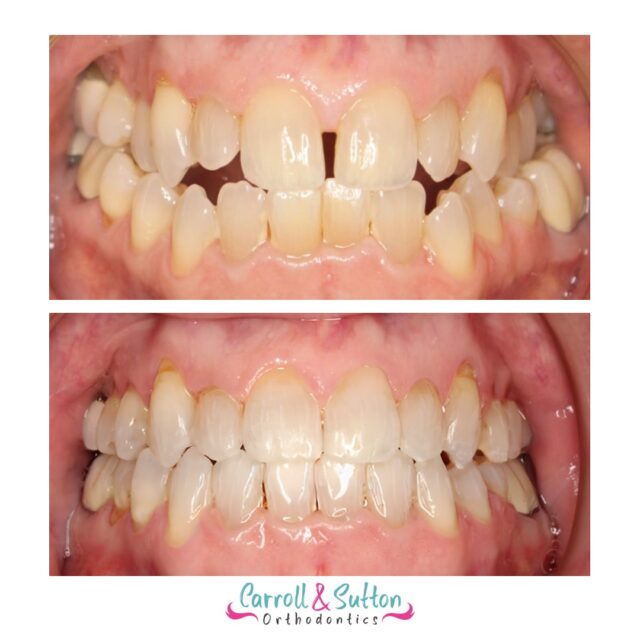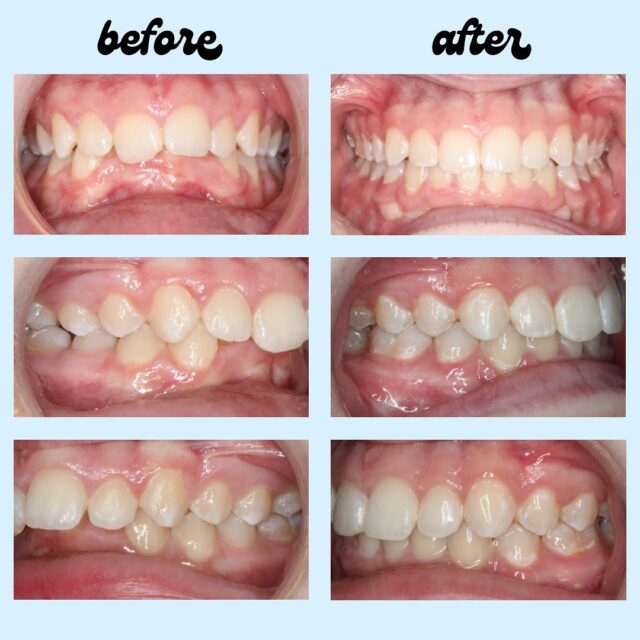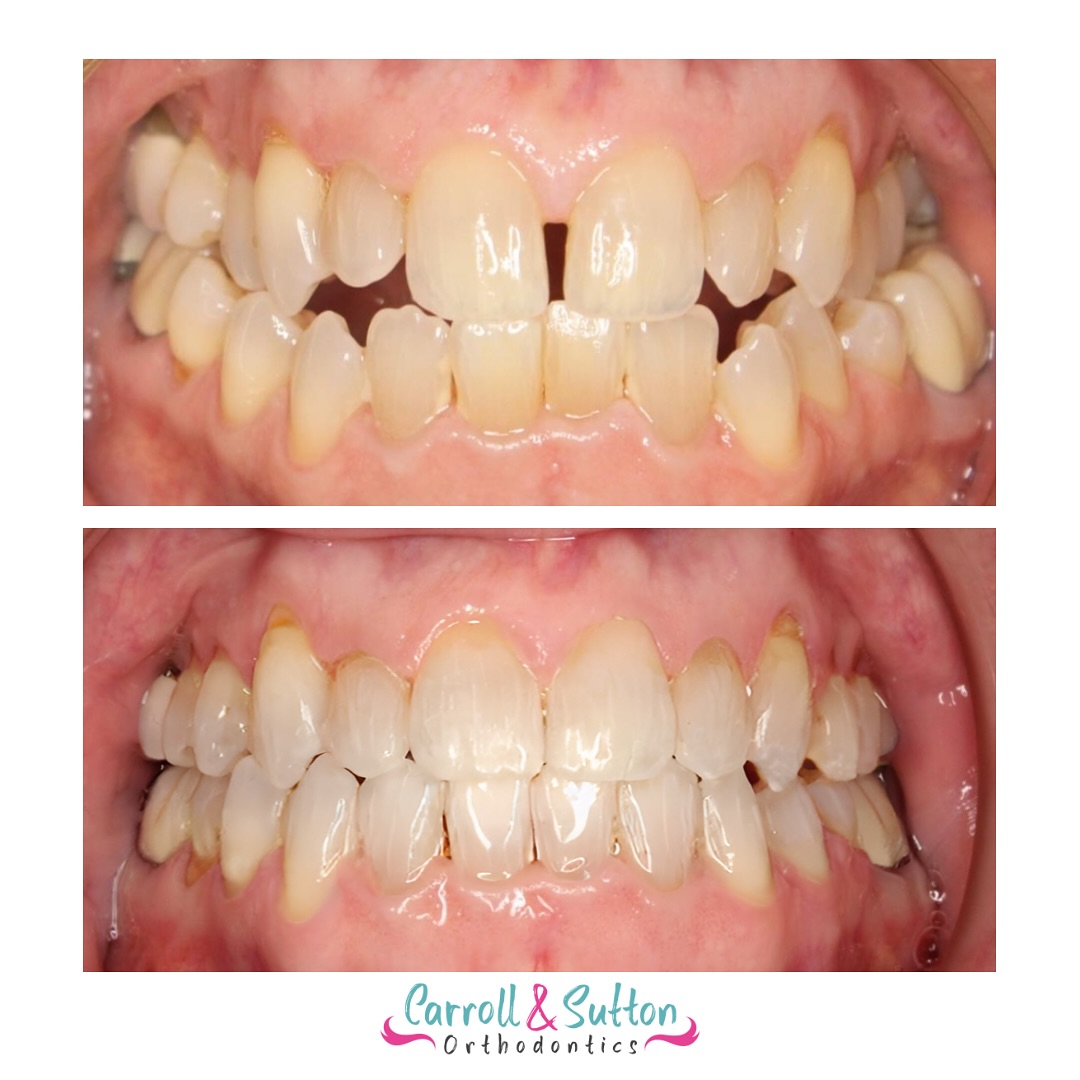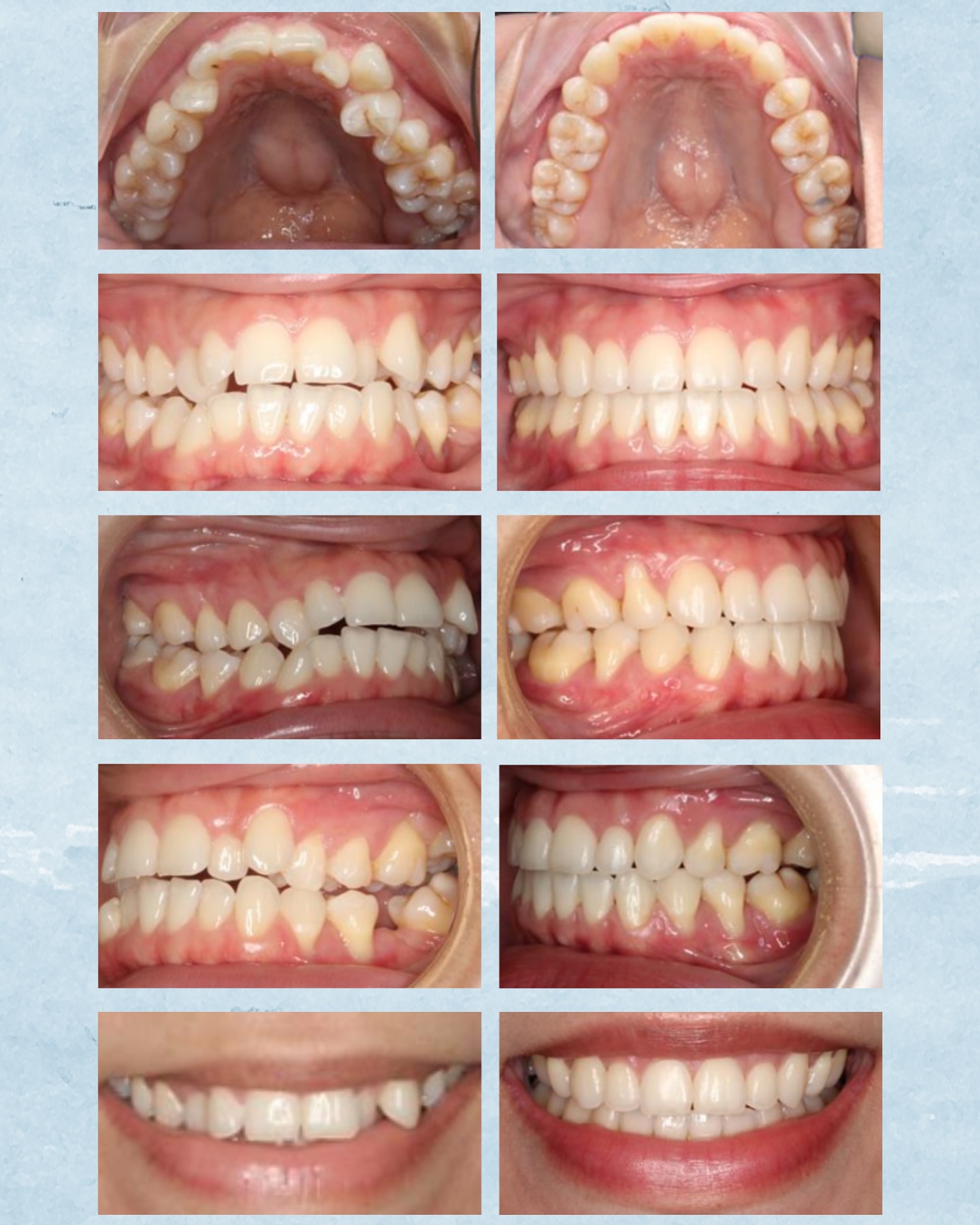Types of Appliances
1
Elastics (Rubber Bands)
Wearing elastics (or rubber bands) improves the fit of your upper and lower teeth. Rubber bands are often necessary during treatment with both braces and aligners. Wearing rubber bands as instructed is essential to the timing completion of your treatment. In many cases, treatment cannot be completed without them. The most common reason for extended treatment time is not following the orthodontist’s instructions with rubber band wearing.
Watch our Elastic Instructional Video2
Forsus™
The Forsus Fatigue Resistant Device is an alternative to rubber bands in certain cases. These springs enable the orthodontist to correct excessive types of bites, known as Class 2 bites, with fewer rubber bands and less patient compliance.
Watch our Forsus™ Instructional Video3
Reverse Pull Headgear (Facemask)
A reverse pull headgear, or facemask, can be used in combination with other orthodontic appliances in order to reposition the upper jaw forward in a condition children with underbites caused by an underdeveloped upper jaw, known as a Class 3 bite. Traditionally, facemasks are worn at nighttime for a year or more in order to correct underbites. This usually results in only forward movement of the upper teeth and flaring of the upper front teeth. Dr. Carroll and Dr. Sutton perform a technique to reposition the upper jaw forward using a facemask in only two or three months of nighttime wear, resulting in little flaring of the upper front teeth. Huh?
Watch our Reverse Pull Headgear Instructional Video4
Herbst® Appliance
The Herbst® appliance is used to correct relatively severe Class 2 bites by posturing the child’s lower jaw forward for 12 to 15 months. This results in moving the upper teeth backward and the lower teeth forward while possibly stimulating additional lower growth as well.
Watch our Herbst® Appliance Instructional Video5
Rapid Palatal Expander (RPE)
The rapid palatal expander “expands” (or widens) a child’s upper jaw by putting gentle pressure on the upper molars each time an adjustment is made. The left and right halves of a child’s upper jaw are not yet fused, enabling an orthodontist to efficiently widen narrow upper jaws. This type of expansion is useful in alleviating crowding without the need for tooth extractions, correcting crossbites of the posterior teeth, opening up the nasal airway, and increasing tongue space. The two latter benefits are particularly beneficial in correcting or preventing certain types of obstructive sleep apnea (OSA). The active expansion phase of this treatment typically takes about two weeks. The expander must then remain in place for 6 to 12 months to solidify the expansion and to prevent relapse.
Watch our Rapid Palatal Expander (RPE) Instructional Video6
Retainers
Retainers may be removable or fixed. They hold your teeth in their new, correct positions after your teeth have been straightened. Your orthodontist will instruct you on how to care for your retainer and the duration of the wear. Wearing your retainer as directed is crucial to prevent relapse of your treatment.
Click this link to see different types of retainers and instructional videos.
7
Separators or Spacers
Separators are little rubber doughnuts that may be placed between your teeth to push them apart so that orthodontic bands may be placed during your next appointment. The separators will be removed before we place the bands. Separators do not mix well with sticky foods, toothpicks, or floss.
Watch our Separators (Spacers) Instructional Video8
MARPE (Micro-implant Assisted Rapid Palatal Expander)
Many adults can benefit from expansion of their upper jaw. Traditionally, upper jaw expansion in adults required either Surgically Assisted Rapid Palatal Expansion (SARPE) or upper jaw surgery (lefort osteotomy). In many adults, Dr. Carroll and Dr. Sutton are able to expand the upper jaw using a modified version of a palatal expander that utilizes small temporary titanium implants known as TADs.
9
TADs
TADs are small (approximately 2mm in diameter) titanium implants that Dr. Carroll and Dr. Sutton place into the jaw bone to provide a source of anchorage. This anchorage enables them to achieve tooth and jaw movements that would otherwise require jaw surgery, unnecessary tooth extractions, or would not be possible at all to correct. Once the anchorage is no longer needed, the TADs are simply removed within a few seconds, requiring no anesthesia during removal.
Watch our TADs Instructional Video
















